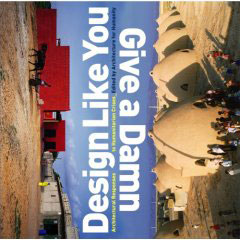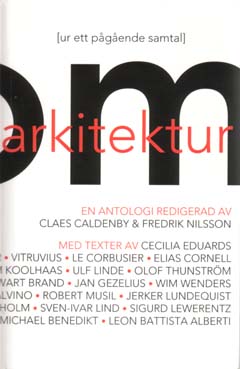Generic Shiny Google Earth Urbanism
 Vidare till ett annat Zaha Hadidbygge, Glasgow Museum of Transport, vid River Clyde i Glasgow med en budget på omkring 70 miljoner pund. Museet är en del av den ombrandningsplan som skall skjuta Glasgow in i den postindustriella tidsåldern. I varje sådan plan med självaktning ingår ett spejsat hus för diffus kulturutövning ritat av en jättekänd arkitekt. Inget undantag här. 2004 vann Zaha Hadids kontor uppdraget med vad som tycks vara ett rätt slappt försök att översätta ett av sina mer generiskt producerade flödesscheman på duk till en byggnad vars främsta formgrepp endast kan ses från luften. Det hela manglas genom en välskriven kritik här. Ett längre citat:
Vidare till ett annat Zaha Hadidbygge, Glasgow Museum of Transport, vid River Clyde i Glasgow med en budget på omkring 70 miljoner pund. Museet är en del av den ombrandningsplan som skall skjuta Glasgow in i den postindustriella tidsåldern. I varje sådan plan med självaktning ingår ett spejsat hus för diffus kulturutövning ritat av en jättekänd arkitekt. Inget undantag här. 2004 vann Zaha Hadids kontor uppdraget med vad som tycks vara ett rätt slappt försök att översätta ett av sina mer generiskt producerade flödesscheman på duk till en byggnad vars främsta formgrepp endast kan ses från luften. Det hela manglas genom en välskriven kritik här. Ett längre citat:"Recently there was an article in BD about the building, whose folded roof structure was recently completed. The article is mainly about the roof, but it speaks volumes about the relationship between contemporary architects, especially icon-stylists, and the engineers who make it happen. The key quote from the article is the following:Läs hela hos entschwindet und vergeht
"He says the competition-winning concept they had to work with was a system of ridges and valleys, which had to be translated into a structure."
Read that again.
So this is what has happened to the Modernists’ quest for a synthesis of the Engineer and the Architect in the last 80 years. Absolute disassociation. The architect wins the competition with a shape, which the brains then have to spend time figuring out how to solve. This isn’t exactly a full circle (the negation of the negation blah blah), but this is a very strange cultural position to be in, a truly postmodernist one. [...]
But there’s something else here as well. The BD article talks about the ‘vast internal space’ of the building, and everyone seems bloody pleased that they’ve managed to create a column free space for the inside. But how big is that space? In the spiel on Zaha’s website they say that it ranges from 30m to 50m wide, and is 200m long. So how proud should an architect and engineer be of a 50m wide, 200m long column free space? I suppose it depends on the time you’re designing it, really. For example, if I had designed a space, sometime around 1867 that had a column free span of 73m and a length of 210m, I’d be pretty proud of myself, and I’m sure that Willian Henry Barlow and Rowland Mason Ordish were pretty proud of their work at St. Pancras. But to do that now is nothing at all special, and those involved seem to be much more pleased that they’ve managed to fix all the problems that they made for themselves, than at the actual impressiveness of the spanning-feat."










1 kommentarer:
Kul att ni kommit igång igen! :-)
Skicka en kommentar
Hem